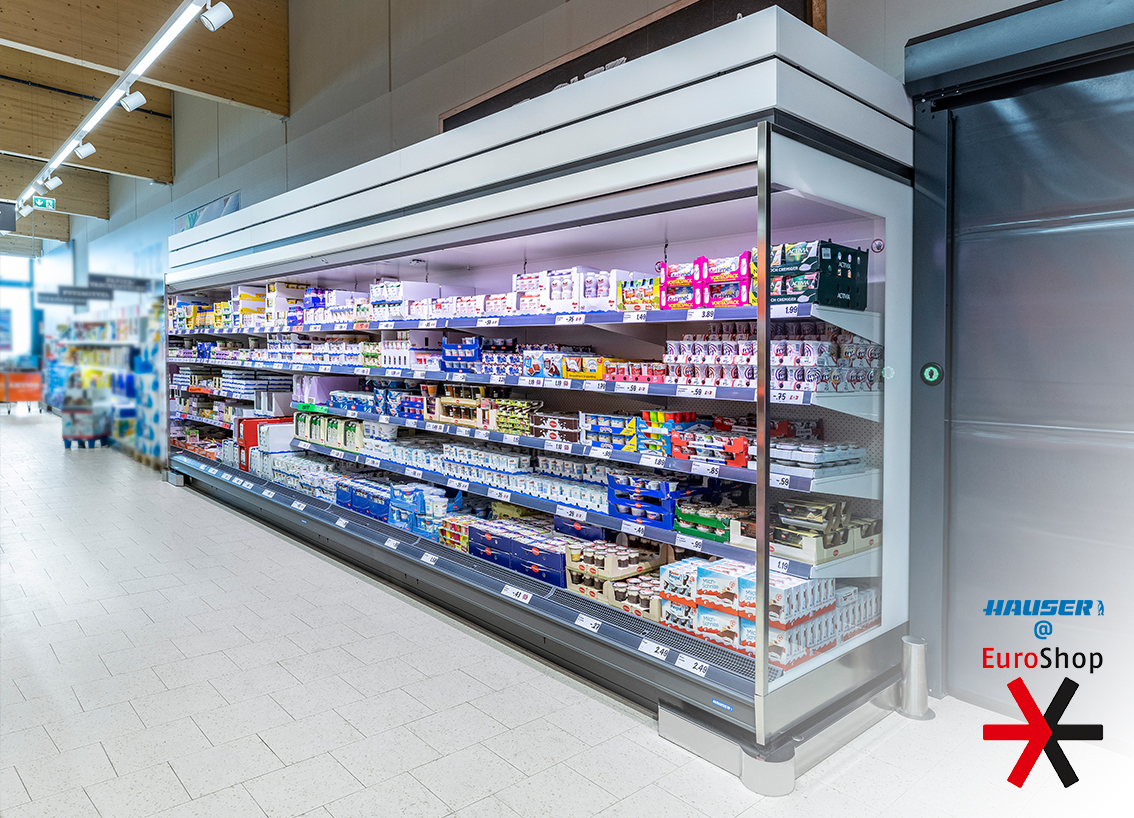Energy-efficient and environmentally friendly refrigeration technology has long since ceased to be a concern for just a few individuals. Sustainable refrigeration technology also needs to meet increasingly stringent legal requirements. In accordance with EU climate protection targets, environmentally harmful synthetic refrigerants (F-gases) are gradually being banned and replaced by alternative refrigerants. The current solution for this is "natural refrigerants".
CO2 is such a natural refrigerant. Since it is non-combustible and has only a low global warming potential, a decision in favour of a refrigeration system with CO2 is definitely a future-proof choice. Where CO2 average did not formerly achieve the energy performance of other refrigerants, the technology is so advanced that it is now absolutely on a par with other refrigerants. Refrigeration and air-conditioning engineering manufacturers such as HAUSER also conduct intensive research into sustainable, low-emission and energy-efficient devices that nevertheless offer a high level of comfort.
Integral refrigerated cabinets with CO2 as the refrigerant meet both criteria. Due to their uncomplicated installation, integral refrigerated cabinets are particularly suitable for retrofitting and rely on an air cooling principle. At HAUSER this product range goes by the name of “Connect”. If you have sufficient space for a machinery room, a CO2 remote system may be the better choice; excellent heat recovery is possible here. Thanks to heat recovery, the waste heat from the refrigerated cabinets can be meaningfully used for heating or hot water preparation, thus significantly reducing energy consumption and emissions in the long term.
Propane is another natural refrigerant; HAUSER uses it in conjunction with integral refrigerated cabinets, also known as “semi-plug-in refrigerated cabinets”. Corresponding to the very low charge of the flammable refrigerant charge of 150 g, the risk potential is reduced accordingly and it is not only environmentally friendly, but also cost-effective. The waste heat generated during operation of the refrigerated cabinet is dissipated via a water-glycol circuit (water loop). The advantage compared with a remote system is the simpler installation, while “semi-plug-in refrigerated cabinets” generate less waste heat compared to integral refrigerated cabinets with air cooling, thus removing the need for additional air conditioning in the summer.
There is now a practical solution not only for waste heat, but also for the condensate produced by refrigerated cabinets. Every refrigerated cabinet extracts moisture from the room which accumulates in the evaporator and has to be defrosted. This results in what can be a considerable amount of water every day – in an average in-store installation this can be several hundred litres per day! With a standard refrigerated cabinet, this water is drained off via a floor drain/siphon provided by the customer. HAUSER solves this drainage problem with a new series of integral refrigerated cabinets in which the condensate is discharged either by pumping it away, evaporation or heating. The advantage for the market operator is that, on the one hand, no (retrofit) installation of a floor drain is necessary while, on the other, the refrigerated cabinet can be installed anywhere in the store, regardless of whether or not there is a floor drain.
Considerable energy savings can be achieved not least through preemptive operation of the refrigeration system (load optimisation) and integral engineering. When it comes to load optimisation, HAUSER optimises all refrigerated cabinets – irrespective of the manufacturer of the control system – so that the entire remote system runs more smoothly using only as much energy as is absolutely necessary and reducing load peaks.
Integral engineering, which HAUSER also offers, avoids unnecessary costs thanks to optimised planning processes, adaptive heating and refrigeration load calculation and optimum dimensioning of the system. All heat flows, experience from a large number of project implementations, and detailed on-site analysis are therefore included in the planning of the system; well-founded optimisation recommendations are then drawn up based on this. The major benefit for the customer is that there is only one contact for all trades, and this contact coordinates the project from planning and requesting quotations through to the installation.


